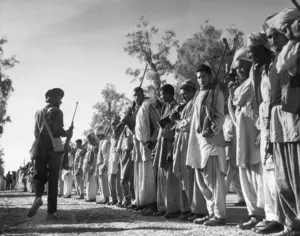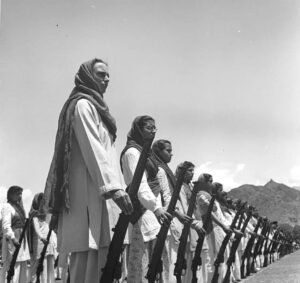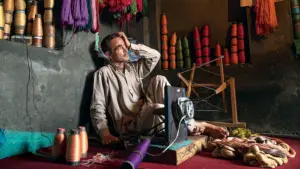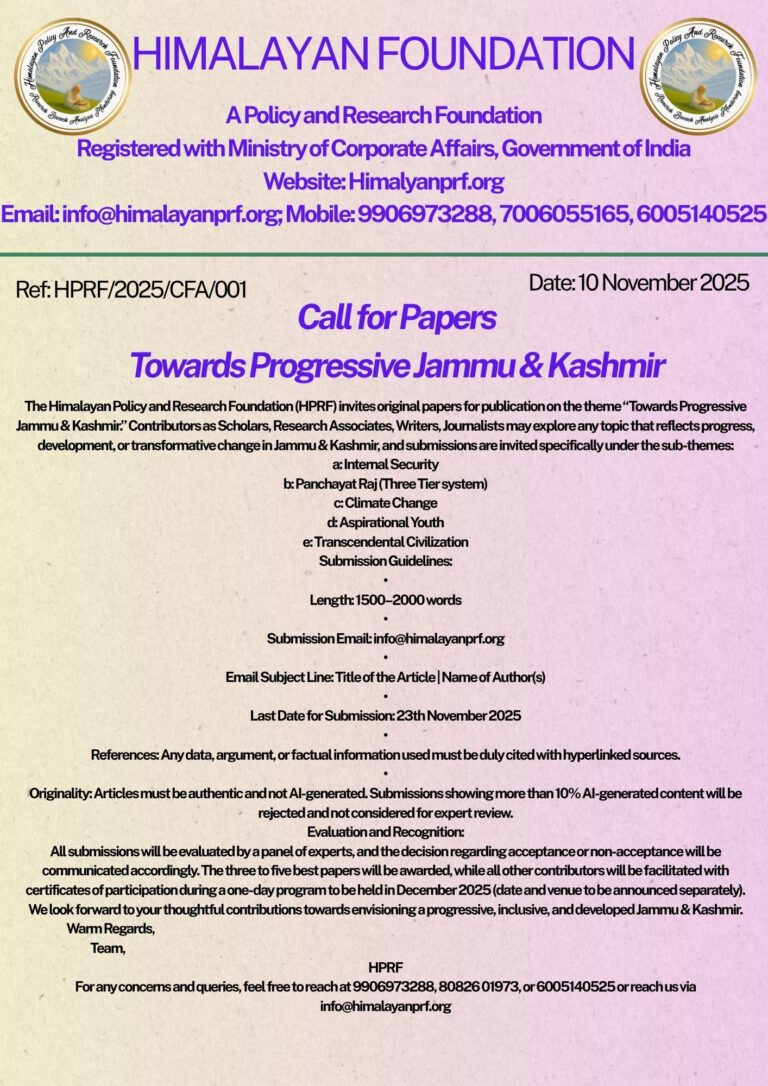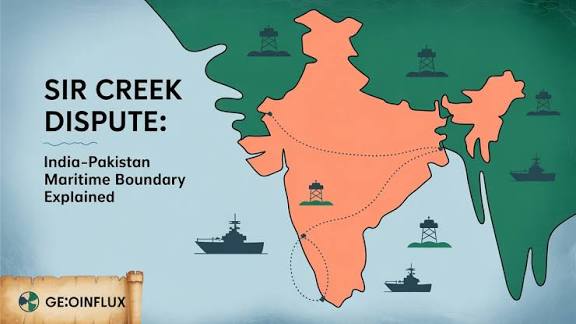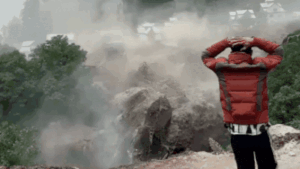Written by: Peerzada Muneer
Wular Lake, situated in the Bandipora district of Jammu and Kashmir, is not merely a geographical feature; it is an enduring presence woven into the ecological, cultural, and spiritual fabric of the Valley. Spanning a fluctuating area between 130 and 189 square kilometres depending on seasonal inflows, it is one of the largest freshwater lakes in Asia and a designated Ramsar wetland of international importance. Formed tectonically, Wular occupies a basin created by geological upheavals along the Jhelum River’s course, fed primarily by the river itself and numerous smaller streams such as the Madhumati and Arin. Its dynamic hydrology — characterised by seasonal expansion during snowmelt and monsoon rains and contraction during winter — not only sustains local biodiversity but also functions as a vast natural flood basin, absorbing excess flows from the Jhelum and mitigating downstream flooding in the densely populated districts.
The ecological significance of Wular cannot be overstated. Its wetlands support an array of aquatic flora and fauna, hosting fish species such as Schizothorax (snow trout), Cyprinus carpio (common carp), and Wallago attu, which form the basis of the local fishing economy. Migratory birds, including the mallard (Anas platyrhynchos), gadwall (Mareca strepera), and greylag goose (Anser anser), arrive from Central Asia each winter, making it an important site for ornithological diversity. The lake’s littoral vegetation — comprising reeds (Phragmites australis), water chestnuts (Trapa natans), and lotus (Nelumbo nucifera) — not only supports avian life but also provides sustenance, craft materials, and income for surrounding communities.
In 1986, the recognition of Wular as a Ramsar site signalled its global ecological value. Ramsar designation is not merely symbolic; it implies obligations to maintain the lake’s ecological character, prevent its degradation, and integrate its conservation into regional planning. Yet, as subsequent decades have shown, this recognition alone was insufficient to shield Wular from accelerating anthropogenic pressures.
For centuries, Wular has been the heart of Kashmir’s inland water economy. Its fisheries historically provided a staple protein source, while its strategic location along the Jhelum enabled trade and transport between the northern valleys and the Srinagar basin. The lake’s reed beds supplied raw materials for mats, baskets, and thatching, while its lotus seeds and water chestnuts formed seasonal dietary delicacies.
Culturally, Wular has been a recurring presence in Kashmiri folklore and oral traditions. Its name itself, derived from the Sanskrit Ullola meaning “stormy” or “rising waves,” reflects its tempestuous surface, which can shift from mirror-like stillness to sudden windswept turbulence. Poets have evoked its expanse as a metaphor for love, longing, and the shifting moods of life. Local proverbs and riddles have used Wular as a measure of depth and vastness — a reflection of its place in the collective consciousness: Khizr sochta hai Wular ke kinaare!
The significance of Wular is magnified when viewed through the spiritual lens of Kashmir’s diverse traditions. In the Nīlamata Purāṇa, an ancient Kashmiri text, lakes and springs are portrayed as abodes of deities and guardians of fertility. In Kashmiri Shaivism, water embodies śakti — the dynamic feminine energy — serving as both the origin and sustainer of life. In Islamic Sufi traditions, which deeply permeated Kashmiri culture from the 14th century onwards, water symbolises divine mercy and purity, flowing endlessly from the Creator to creation. Wular, with its vast, unbounded waters, naturally became a symbol of divine generosity and abundance.
In Kashmiri Buddhism’s earlier historical phase, before the region’s religious landscape transformed, large water bodies were sites of meditation and metaphor, representing the mind’s potential for clarity and depth once the sediment of ignorance settles. Across these traditions, water was never a mere physical resource — it was sacred, a medium of spiritual encounter.
Standing on the banks of Wular at dawn, one witnesses the play of mists over the still surface, the mirror-like reflection of snow-clad Harmukh peaks, and the slow passage of shikaras ferrying fish or reeds. These scenes are more than picturesque; they are part of Kashmir’s aesthetic identity. The lake has inspired miniature paintings, devotional poetry, and even musical compositions, often as an emblem of harmony between human life and nature.
Yet, in the last few decades, the aesthetic and spiritual ethos surrounding Wular has been fractured. The same society that once revered it as a life-giving presence has subjected it to dumping of untreated sewage, unregulated sand mining, and large-scale encroachment. The invasion of willows — initially encouraged for timber and soil-binding purposes — has choked its hydrological channels. Each encroachment, each discharge of pollutants into its waters, is not merely an environmental infraction but a betrayal of the spiritual contract that Kashmiri culture has historically maintained with its waters.
The pollution and shrinkage of Wular symbolise a deeper malaise — the erosion of values that once governed human-nature relations in Kashmir. Traditional water ethics, embedded in folk customs and religious injunctions, emphasised pure water as a shared trust. The spiritual ethos demanded restraint, reverence, and collective care. By allowing plastic debris to float where lotus flowers once bloomed, and by turning floodplain grazing lands into private real estate, we have not merely endangered a wetland; we have fractured a moral relationship.
This breach is not irreversible, but it demands recognition that restoring Wular is not solely about meeting Ramsar obligations or improving fisheries yields. It is also about reviving the spiritual consciousness that sees the lake as a living entity deserving dignity and care.

Decline, Restoration, and Future Imperatives
For centuries, Kashmir’s relationship with water was framed as a sacred covenant — an ethic of reverence, sustainable use, and ritual respect. Wular Lake, with its vast shimmering expanse of lotus, reeds, and riverine corridors, embodied that covenant as both a source of ecological vitality and a cultural anchor. Generations of Kashmiris drew their food, livelihood, and imagination from its waters. The lake not only moderated floods and supported biodiversity but also inspired poetry, folklore, and spiritual symbolism. Yet, from the mid-twentieth century onwards, this bond began to fray, as new patterns of development, demographic pressure, institutional neglect, and ecological exploitation set in motion a gradual but devastating decline.
The decline first became visible in the seemingly well-intentioned willow plantation programs of the 1950s. Salix alba (white willow) was planted across large stretches of the lake to provide timber, fuel, and erosion control. By the end of the twentieth century, nearly 27 square kilometres — about one-quarter of Wular’s open water surface — had been converted into dense willow groves. These plantations, although profitable in the short term, fundamentally disrupted the lake’s hydrology. They trapped sediment, slowed water circulation, and drastically reduced the lake’s flood absorption capacity. Decomposing litter from the plantations increased organic loading, turbidity, and oxygen depletion. In effect, an intervention once framed as a remedy turned into ruin. The state had prioritized short-term extraction over ecological integrity, with consequences that would reverberate for decades.
Simultaneously, the fringes of Wular became increasingly vulnerable to encroachment. Population growth, agrarian pressure, and the absence of effective governance encouraged the expansion of paddy fields and vegetable plots into ecologically sensitive marshes. This transformation was often achieved through dredging, leveling, and filling of shallow wetlands. What began as a marginal farmer’s survival strategy steadily snowballed into systemic reclamation, eating away at the lake’s periphery. Here too, livelihoods and ecological disruption became entangled. Farmers viewed cultivation as a necessity, but in the process ecologically critical marshland was lost.
Recent administrative assessments reveal the alarming extent of this transformation. According to the Divisional Commissioner’s office, over 640 kanals of Wular’s land have been encroached upon — a staggering number for a wetland of such significance. Approximately 90 kanals were seized at the lake’s outer parameters, of which only 10 kanals have so far been retrieved. Some of these tracts have been turned into paddy fields; others into willow plantations; and in certain cases, illegal constructions have risen on erstwhile lakebed. The National Green Tribunal, alarmed at this unchecked shrinkage, intervened to direct the Union Territory administration to prepare detailed action plans for each wetland in Kashmir. The Tribunal’s orders were explicit: unscientific dumping of waste and rampant encroachment had to stop, and local administrations were required to take corrective measures within weeks. Responding to this directive, the Divisional Commissioner ordered Deputy Commissioners of Baramulla and Bandipora to take up the matter of encroached land under cultivation on priority, with a clear mandate to act within 15 days.
Encroachment, however, is not just a matter of statistics. Its ecological impact is profound. As marshes are converted into farmland, natural breeding grounds for fish disappear. The lake’s capacity to absorb floodwaters is reduced, threatening downstream populations. Reports point to a sharp decline in fish populations and deteriorating water quality, both of which directly undermine the livelihoods of local communities that depend on fishing and aquatic harvests such as lotus stems and water chestnuts. What is more troubling is the persistence of the problem: while official reports mention 640 kanals under encroachment, separate court proceedings recorded 380 kanals and 11 marlas as encroached land. The discrepancy reveals a pattern of bureaucratic ambiguity, contradictory data, and institutional inertia.
If encroachment symbolises the slow nibbling away of Wular’s body, pollution represents the poisoning of its bloodstream. The townships of Sopore and Bandipora, as well as dozens of surrounding villages, discharge untreated sewage and solid waste directly into the lake. Agricultural runoff adds fertilizers, pesticides, and herbicides, creating nutrient-rich conditions that fuel eutrophication. The result is the explosive growth of invasive weeds such as water hyacinth (Eichhornia crassipes) and azolla. These weeds blanket the water surface, block sunlight, reduce oxygen concentration, and suffocate aquatic life. Where once lotus flowers stretched in radiant blooms, now mats of invasive species choke the water.
Siltation has further worsened matters. Wular’s natural function as a sediment trap became a liability when catastrophic floods in 1992 and again in 2014 delivered massive loads of silt into its basin. Lotus beds and marshlands were buried. Depths that once reached 14 metres in certain basins were reduced to 5-7 metres within a decade. The flattening of depth gradients eliminated fish nurseries, destabilised habitat complexity, and diminished water clarity. The spiritual clarity once celebrated in poetry was replaced with murk and stagnation.
At the heart of these problems lies an institutional vacuum. For decades, the governance of Wular was split among numerous departments — Forest, Fisheries, Irrigation and Flood Control, Tourism, Agriculture, and Urban Development. Each pursued its own mandate, often in contradiction to others. The Forest Department supported willow plantations, while the Fisheries Department warned about habitat loss. Irrigation officials viewed Wular primarily as a flood regulator, while Tourism saw it as a scenic resource. This fragmentation ensured that no single vision guided the lake’s conservation. In 2012, the government created the Wular Conservation and Management Authority (WUCMA) to address this gap. Yet WUCMA was underfunded, lacked enforcement powers, and had no dedicated staff of its own, relying instead on officers drawn on deputation. Its presence was more symbolic than operational.
The High Court of Jammu and Kashmir repeatedly noted these failures. In a series of hearings, the Division Bench of Chief Justice N. Kotiswar Singh and Justice M. A. Chowdhary observed with dismay that despite central assistance amounting to ₹125 crores under the Wular Action Plan, little visible progress had been made. An additional ₹200 crores had recently been sanctioned by the Union Government, but the court expressed concern that the funds were being wasted rather than effectively utilised. The Bench appointed an Amicus Curiae and directed that he visit Wular and its 33 surrounding villages to assess the ground reality. The purpose of the visit was to evaluate not just ecological conditions but also the management of tourism around the lake. Court records revealed that residents of these villages continued to dump garbage directly into the lake, while the authorities had failed to provide any alternative waste management sites.
The Bench asked the Senior Additional Advocate General to provide details about WUCMA’s staffing. The response confirmed that there was no sanctioned staff; all officers were on deputation. The Chief Executive Director was ordered to explain both how the sanctioned funds had been spent and what steps were being taken to retrieve the encroached land. The court was particularly critical of the lack of timelines: while WUCMA claimed to be making efforts, it offered no specific schedule for retrieving the land or for installing waste management mechanisms. The Division Bench also noted with concern that a separate authority — the Manasbal and Wular Development Authority — existed for tourism promotion around the lake, yet its work was neither visible nor accounted for. The court directed that this authority be impleaded as a respondent and required to submit an Action Taken Report.
Judicial scrutiny, thus, exposed the core of Wular’s institutional crisis: duplication of authorities, absence of accountability, and lack of coordination. Funds were sanctioned but outcomes remained elusive. Staff were appointed but on deputation, preventing the building of long-term expertise. Encroachments were acknowledged but rarely retrieved. The lake’s decline was not just an environmental problem but a reflection of administrative malaise and governance failure.
This institutional vacuum has had direct social consequences. Fishing communities that once drew 15-20 kilograms of catch daily saw their hauls reduced to barely 2-3 kilograms. Families that depended on lotus stems and chestnuts for seasonal income found their harvests dwindling to near insignificance. Many households, deprived of their traditional livelihoods, slipped into poverty. With this collapse came cultural loss as well: songs, rituals, and festivals once tied to the rhythms of the lake grew muted. To lose Wular was not just to lose a wetland, but to lose a cultural lifeline.
Amid this bleak scenario, however, seeds of revival have begun to sprout. In recent years, WUCMA, despite its limitations, initiated large-scale restoration projects. Baseline ecological surveys mapped depth profiles, vegetation, and water quality. From 2020 onwards, desiltation drives were undertaken with cutter suction dredgers. Nearly 7.9 million cubic meters of silt were removed from clogged inlets and shallow basins, particularly around Garoora, Ashtangu, and Laharwapora. These interventions reopened flood corridors and restored hydrological gradients. Depth and water clarity began to improve.
Willow removal was also launched in a phased manner. Initially, narrow circulation channels were cleared; later, larger blocks of plantations were removed. More than 100,000 willows were felled in early phases, generating approximately ₹25 crores in timber revenue. Crucially, this revenue was reinvested into further restoration, while the wood itself provided livelihood opportunities for local carpenters and cooperatives. By linking ecological restoration to economic benefit, WUCMA managed to secure some measure of community support.
The most striking symbol of recovery came in late 2024, when lotus stems began sprouting again in cleared areas. By mid-2025, a widespread bloom stretched across two to three square kilometres of open water. The spectacle, unseen for nearly two decades, electrified local imagination. Journalists hailed it as a “cultural ecosystem rebirth.” Poets composed verses. Faith leaders interpreted it as a spiritual sign of renewal. For communities that had watched the lake decline in silence, the lotus bloom was a moment of collective reawakening.
This ecological revival had immediate social consequences. Local cooperatives revived chestnut peeling and lotus stem processing. Eco-tourism initiatives, including birdwatching tours and lotus-viewing trips, emerged, providing alternative livelihoods. Migratory birds, sensing the reopened channels, began returning. Fish catches, though still low, showed early signs of improvement.
These developments demonstrate that restoration is possible when ecological interventions align with community involvement and institutional support. Yet the challenges remain enormous. Encroachments are still widespread; judicial directions must be translated into actual retrieval. Waste management infrastructure is still absent in surrounding villages. Institutional fragmentation has not been resolved: WUCMA continues to operate without permanent staff, while overlapping authorities complicate accountability. Climate change poses new risks, with intensified floods threatening to undo hard-won gains.
Conclusions and Way Forward
The trajectory of Wular’s decline and the scattered efforts at revival yield a complex balance sheet of both successes and lapses. Among the most striking achievements is the reconnection of communities with the lake. The reappearance of lotus blooms in 2025 was not only a botanical event but also a cultural magnet that revitalized emotional ties long atrophied. Communities that had grown distant from the lake’s rhythms found in the lotus a symbol of continuity and renewal, reconnecting spiritual traditions, cultural memory, and ecological belonging. The lake has also begun to show signs of hydrological recovery. Large-scale de-siltation and channel clearing restored some of the depth, flow, and water clarity that had been lost to decades of sedimentation and pollution, allowing the hydrology of the basin to breathe again. Alongside this hydrological revival, there is evidence of genetic recolonization. Stocks of lotus, chestnut, and native reeds have shown the capacity to regenerate once conditions improved, pointing to the resilience embedded in the ecosystem when given a chance to recover.
Livelihoods, too, have experienced the first stirrings of renewal. The revival of value chains in lotus stems and chestnuts, the emergence of nascent bird-tourism circuits, and the carpentry work generated by the removal of willows together represent not just jobs but hope — a possibility that ecological restoration can dovetail with economic survival. Equally significant has been a shift at the institutional level. The Wular Conservation and Management Authority (WUCMA), once dismissed as largely symbolic, has begun evolving into an operational authority capable of coordinating real interventions, signaling at least a tentative change in governance posture.
These successes, however, are tempered by significant lapses. The most obvious of these is the delayed action that allowed the crisis to deepen for decades. Willow plantations, marsh reclamation, and unregulated dumping were permitted to unfold unchecked, heightening the scale of ecological breakdown. Fragmented governance remained another enduring weakness. Turf battles among departments persisted for years, and real coordination only came when the scale of decline became undeniable. Even today, infrastructural neglect continues to undermine recovery, as sewage treatment and solid waste systems remain grossly inadequate in the feeder towns and villages surrounding the lake.
Equally worrying is the risk of social inequity. Early gains in lotus and chestnut value chains or eco-tourism circuits threaten to benefit only a few unless inclusive frameworks are put in place to ensure broad participation of local communities, especially the poorest households that have historically borne the brunt of Wular’s decline. Finally, looming above all is the threat posed by climate change. Future floods, heavier monsoons, or erratic weather patterns could easily deliver new shocks, and without watershed-level interventions the gains of the last few years may be reversed.
Given this complex picture, the forward strategy must be anchored in resilience and in the recognition of Wular as both an ecological system and a sacred trust. Catchment-wide erosion control is the first imperative. This requires large-scale reforestation in the foothill zones, the construction of erosion traps such as check-dams, gabions, and vegetated ditches upstream, and the legal protection of marshes and wetland buffers that still survive along the lake’s edges. Without stabilizing the catchment, no in-lake intervention will be sustainable.
Institutional integration and empowerment form the second pillar of this strategy. WUCMA must be legally empowered with clear enforcement powers, budgetary control, and jurisdiction over tourism, fisheries, forestry, agriculture, and environmental management. The creation of interdepartmental task forces and shared data platforms is essential to end the culture of silos and foster genuine collaboration.
Pollution mitigation is another urgent priority. Building decentralized sewage treatment plants in Sopore, Bandipora, and surrounding hamlets is non-negotiable. Zero-dumping bylaws must be strictly enforced, with penalties for polluters. Agricultural practices in the catchment need to shift toward eco-friendly models, with organic techniques and buffer strips that prevent nutrient loading into the lake. Only through a comprehensive approach to pollution can the water regain its clarity and ecological balance.
Ecological restoration must also continue in a phased and careful manner. Willow removal should proceed but with sensitivity, maintaining habitat corridors to avoid sudden collapse of bird or small animal niches. Revived chestnut and lotus zones should be protected with rotational harvest policies to prevent overexploitation. Replanting of native reeds and intermittent marshlands will help rebuild the ecological mosaic that sustains biodiversity.
Parallel to these ecological measures, sustainable livelihood pathways must be expanded. Community cooperatives producing lotus-pulp products, chestnut flour, and reed-based crafts can strengthen economic resilience. Birdwatching and heritage-tourism circuits, guided by local youth, offer both employment and cultural engagement. Training programs that link youth and women to ecotourism, hospitality, and handicrafts ensure that restoration is also socially inclusive, offering new opportunities where older livelihoods have faltered.
The strategy must also embrace a cultural-spiritual reawakening. Shrines, mosques, and temples around Wular can be mobilized to hold “Water Blessing Days/Water Venertion Days” at the lake’s shores, reminding communities of their ethical responsibilities. Schools and spiritual leaders can revive water ethics rooted in Kashmiri traditions, teaching children that water is not just a resource but a sacred trust. Artistic and poetic expressions celebrating the lake’s revival — murals, songs, festivals — can reinforce this cultural consciousness, embedding conservation within identity itself.
Monitoring and adaptive management will be the backbone of all these efforts. Real-time water quality and depth monitoring buoys can provide data to guide interventions. Community members trained as “Lake Observers” can feed information through mobile platforms, combining science with citizen engagement. Annual “Wular Health Reports” can keep authorities accountable and ensure that restoration remains an evolving, adaptive process rather than a one-time intervention.
Ultimately, the revival of Wular is about far more than conservation. It is about reclaiming a sacred bond between people and place. The lotus blooms of 2025 were not merely flowers; they were spiritual signposts, guiding Kashmir back to an ethic of care and reverence. By aligning ecological restoration with livelihood dignity, institutional coherence, and cultural revival, Kashmir can re-establish the profound covenant with its waters. Wular’s healing speaks to a broader imperative: that ecological health is inseparable from cultural soul, and that restoration must be understood as both environmental and ethical renewal. The renewal of Wular must purify not only its waters but also the collective conscience of the valley, ensuring that sacred currents continue to flow in harmony with its people.
In conclusion, Wular Lake is more than a geographical feature; it is the living heart of Kashmir’s hydrological network, a repository of biodiversity, and a mirror of civilizational ethos. For millennia it functioned as a hydrological buffer, absorbing the excesses of the Jhelum, regulating floods, and releasing life-giving water downstream. While its Ramsar designation in 1990 acknowledged its global ecological significance, for Kashmiris its meaning has always run deeper, woven into folklore, seasonal rhythms, culinary practices, and spiritual life. The late-twentieth-century decline — marked by willow plantations, encroachment, pollution, and siltation — was not just ecological injury but a symbolic rupture of the covenant between people and place.
The challenge now is to sustain this fragile recovery. Scientific restoration must continue, pollution must be controlled, institutions must be integrated, livelihoods diversified, and communities empowered as stewards. Only through such integrated strategies can Wular become a model of socio-ecological resilience, not only for Kashmir but for wetlands worldwide.
The fate of Wular is, in essence, a moral test for this generation. In Kashmiri spiritual thought, water is both witness and participant in human life: it carries blessings when respected and withholds them when abused. The stewardship we exercise today will determine whether future generations inherit a living lake or a lifeless basin. To pollute Wular is to pollute ourselves; to restore it is to restore something essential in the Kashmiri soul. The lotus rebloom is nature’s invitation — the question is whether we will accept it. In securing Wular’s future, we secure our own, hydrologically, culturally, and spiritually.
References
- Wetlands International – South Asia. (2012). Comprehensive Management Action Plan for Wular Lake, Kashmir. New Delhi: Wetlands International.
- Ramsar Convention Secretariat, 2010. Wise use of wetlands: Concepts and approaches for the wise use of wetlands. Ramsar handbooks for the wise use of wetlands, 4th edition, vol. 1. Ramsar Convention Secretariat, Gland, Switzerland.
- Rashid, Mudasir, S. H. Baba, F. A. Shaheen, F. A. Lone, S. S. Pathania, Furqan Hamid, M. Mubashir, and Tanveer Ahmad. “Restoration of Asia’s largest fresh water lake using multi criteria decision making model: A case study of Wular Lake.”
- Keller, Reuben P., Ather Masoodi, and Ross T. Shackleton. “The impact of invasive aquatic plants on ecosystem services and human well-being in Wular Lake, India.” Regional Environmental Change 18, no. 3 (2018): 847-857.
- Jamal, Saleha, Wani Suhail Ahmad, Uzma Ajmal, Md Aaquib, Md Ashif Ali, Md Babor Ali, and Shafiq Ahmed. “An integrated approach for determining the anthropogenic stress responsible for degradation of a Ramsar Site–Wular Lake in Kashmir, India.” Marine Geodesy 45, no. 4 (2022): 407-434.
- Habib, Neelofer, and Salima Jan. “Socio-economic status of fishermen community of Wular Lake in district Bandipora of Jammu and Kashmir.” Journal of Fisheries 9, no. 3 (2021): 93205-93205.
- Atufa, Regu, Pachampalayam Shanmugam Ananthan, Masood‐ul Hassan Balkhi, and Sadaf Gul. “Interdisciplinary assessment of fisheries sustainability in Wular Lake, India.” Fisheries Management and Ecology 30, no. 3 (2023): 284-299.
- Ganaie, Tariq Ahmad, Saleha Jamal, and Wani Suhail Ahmad. “Changing land use/land cover patterns and growing human population in Wular catchment of Kashmir Valley, India.” GeoJournal 86, no. 4 (2021): 1589-1606.
- Kulkarni, U. D., Asiya Nazir Khan, and R. S. Gavali. “Rate of siltation in Wular Lake (Jammu and Kashmir, India) with special emphasis on its climate & tectonics.” The International Journal of Climate Change: Impacts and Responses 1, no. 3 (2009): 233.

